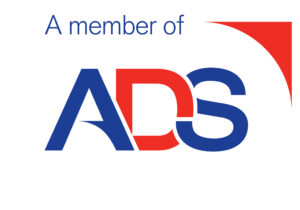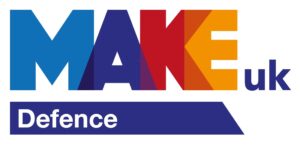Barry Harris MBE, a senior advisor to Proelium Law LLP and a widely experienced businessman, shares a series of blogs offering practical commercial advice.
The ability to express clearly and more efficiently on paper is an essential skill to proposal writing. It is through the medium of proposal writing that ideas, products, and services are conveyed to potential customers, the senior management team, and colleagues.
Managers will frequently need to make a case for what should be done, or for a product or service to be sold – a manager will have to persuade customers, senior management, or colleagues and make recommendations. A proposal may be an internal communication to management and team, or a proposal to sell products and services to a client. To achieve this, the manager needs considerable self-belief and absolute faith in the product or service being offered. Above all, the effectiveness of the proposal will depend upon the care with which it has been prepared.
Preparation
Preparation and research are vital, the author(s) of a proposal must consider what should be covered and why, also how the target reader will react. Then it is possible to state the positive case for the proposal stressing the benefits without underestimating costs, and anticipating objections.
What problems are you proposing to solve?
It is important to think of the questions the target(s) of the proposal is likely to raise and answer them in advance. The most likely questions are as follows:
- What:
- is the proposal?
- will be the benefit?
- will it cost?
- are the facts, figures, forecasts and assumptions of the proposal based upon?
- are the alternatives?
- Why:
- should it change what is being used or done now?
- is this proposal or solution better than alternatives?
- How:
- is the change to be made?
- are the risks to be overcome?
- have alternatives been researched?
- is affected by the change?
- Who:
- will be affected by the change or new product?
- is likely to have the strongest views for or against the change and why?
- will implement the proposal?
- When:
- should this be done?
Three things are required to make the case:
- Demonstrate that the proposal is based on a thorough analysis of the facts, the needs of the target (customer) of the proposal and that alternatives were properly evaluated before a conclusion was reached. If assumptions have been made on the proposal, it is important to demonstrate that they are reasonable by relevant experience and justifiable projections, which allow for the unexpected. Remember that a proposal is only as strong as its weakest assumption!
- List the benefits. Wherever possible express benefits in financial terms. Abstract benefits such as customer satisfaction, or employee morale are difficult to sell. Do not provide loose figures; financial justifications will not withstand examination.
- Reveal costs, do not try to disguise them in any way. Be realistic; a proposal will be destroyed if costs are underestimated or wrong.
Presentation
Proposals can be in two parts – a written proposal and an oral presentation. The quality of both will tip the balance in favour or to the contrary.
When making an oral presentation to the target audience:
- Do not repeat the facts in the written proposal. Use the opportunity to propagate the main points of the proposal, leaving out the detail.
- Do not assume that the target audience has read the written proposal or understood it. While presenting, and this can also include demonstrating the proposed product or system, avoid referring to the written proposal, this can switch audience attention. Use visual aids, but do not overdo them, it is possible to be too slick! The audience must be convinced by the presenter, not the visual aids.
- Ensure that the opening to the presentation captures the attention of the attendees. They must be immediately interested in the presentation. Begin by outlining the plan, its benefits and costs.
- Bring out the disadvantages and the alternatives so as not to be suspected of concealing information.
- Avoid being drawn into detail. Be succinct and to the point.
- An emphatic summary is imperative. It should convey with complete clarity the proposed solution, product, or system.
The effectiveness of the presentation will be dependent on how well it is prepared.
Written Proposal
What should the proposal be?
- Organised to guide the reader: Purpose Statement, Problem Statement, Solution Statement, Plan-Costs-Schedules, Recommendations, Conclusions
- Persuasive
- Organised
- Researched
The proposal should start with a declaration, as an introduction, which will summarise the subject and objectives of the proposal. It is included to give the target reader an accurate, understanding what the proposal will cover and what the reader can gain from reading it. Using this outline will provide a strong method of connecting to the target reader from the start.
The fundamental rules of proposal writing are to give the written proposal a logical structure – four volumes such as:
- Technical – what is being offered or proposed, with an outline description as an executive summary, and a detailed description as the meat of the volume;
- Program Management – (how the product, service, or system will be delivered and implemented, including timings), include in this volume risks and risk management;
- Logistics and Support – How the product, system, or service is proposed to be delivered, and over what period. How it is to be supported through its lifetime (this may depend on the customer’s support philosophy). Include in this volume, details, on training, technical manuals, support, and obsolescence.
- Commercial – This volume will contain the financial cost, the price to the customer, details of milestone payments, terms and conditions. A commercial profile of the company, history, structure, qualifications, pen pictures of key personalities, and past performance in delivering similar projects and services.
It is probable that a written proposal will be authored by four different managers, one per volume. As the proposal manager, ensure that all understand the rules for Corporate Image, language, font, numbering, and style.
Each volume will have a:
- Beginning – An introduction explaining the volume, its terms of reference, any sources of information, and assumptions which are used.
- Middle – This area contains the assembled facts. Analysis of the requirement should lead logically to the conclusions and recommended solution in the final section. A common weakness in proposals is that this build up of information does not lead logically to the conclusion, which is the product, service, solution, or system being offered.
Summarize facts. Identify alternatives, set out pros and cons of each one, but be clear about which is favoured. At this point, a compliance matrix can be a useful table to allow the target reader to compare the requirement against what is being offered and alternatives.
Typically, this section of the proposal can start by describing the current situation; it can list problems or weaknesses, and even suggest why they have occurred.
- End – The final section sets out the recommended product, service, solution or system if there are options state how each of them will help achieve the stated aim or requirement of the target customer.
It should also list the benefits and costs, although not the financial cost which should be exclusive to the Commercial Volume. It should include the costs of ownership, and implementing what the proposal recommends.
- Summary – It is helpful to provide a summary to each volume. It concentrates the target readers mind and can be a useful agenda in presenting and discussing the proposal.
Plain Words
“If language is not correct, then what is said is not what is meant; if what is said is not what is meant, then what must be done remains undone” – Confucius
The following precepts are useful to follow, in conveying your proposal without ambiguity:
- Do not use more words than are necessary to convey the information; more words are likely to obscure meaning and tire the Avoid superfluous adjectives and adverbs, especially phrases where single words would serve;
- Use familiar words rather than the far-fetched to the express the meaning equally well; familiar words are more likely to be understood.
- Use words with a precise meaning rather than those that are vague; they will provide clarity and make the meaning clear.
Red Team
Before issuing the proposal to the customer, always practise a policy of “Second Eyes”.
Create a Red Team made up of individuals to read, spell check, grammar check, content check each volume, and suggest changes. The Red Team is an independent group, not the authors of the proposal, that challenges the proposal author(s) to improve the effectiveness of the proposal. A Red Team is useful in organisations with strong cultures and fixed ways of approaching problems, which may overlook the more obvious flaws in a proposal.
The proposal is about setting out the idea in clear thinking, delivering a complex information set logically, in a structured fashion, by which the target reader will quickly assimilate it and be drawn to the recommended product, service, solution, or system being proposed.
Need advice?
If you’d like further information, or to discuss working with us, you can get in touch via our Contact Us page






